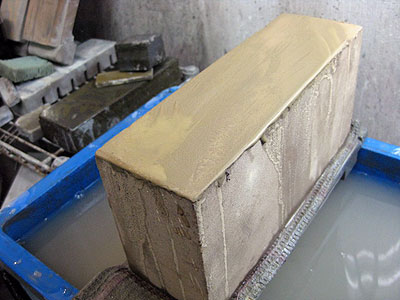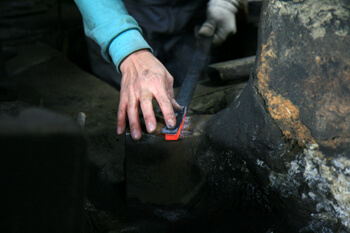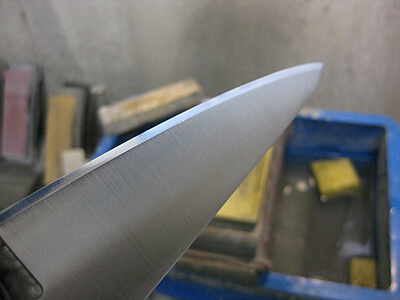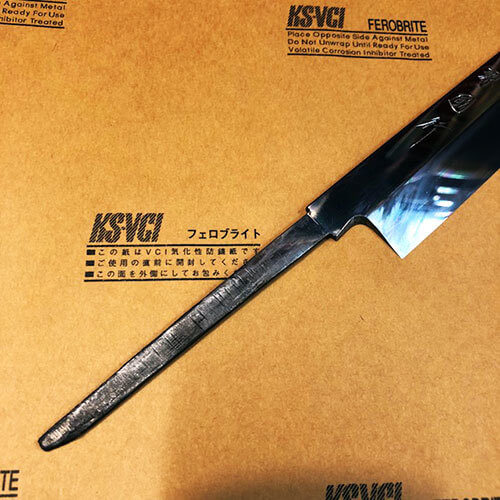Fresh katsuo
Yesterday, Ueda Shihan visited our company for his regular knife check-up. He even brought me some fresh katsuo, just as the season’s starting!
With a quick ‘Let me borrow your kitchen for a bit,’ he started cutting it up in our tiny office kitchen. He used a 300mm INOX yanagiba that he’d been working with for a whole week. Watching from the side, I couldn’t help but be impressed—his slicing was smooth and effortless, as expected from a master.
Even though the INOX had been through a week of tough use on-site and had lost some of its original sharpness, his knife skills made up for it. And to do that in such a cramped space, no less!
I had just finished sharpening an 8-sun (240mm) White #3 yanagiba, so I asked him to give it a try. (I know freshly sharpened steel can have a bit of a metallic taste, but hey, it was for me, so I didn’t mind.)
From the side, I could see the knife was cutting well, but I noticed something different—Shihan’s movements had changed. I was wondering why, and as usual, he said, ‘Tatsuya, why don’t you give it a try?’
So I took both knives for a spin: the 300mm INOX yanagiba and the 240mm White #3 yanagiba.
Here’s what I felt. The White #3 cut through effortlessly, as you’d expect, but… it felt a bit difficult to handle. The INOX, though not as sharp, was much easier to control!
I was running through all the possible reasons for this, and then Shihan said, ‘It’s the weight of the knife.’
The White #3 had a razor-sharp edge, but since it’s lighter than the 300mm INOX, I had to put in more effort to push it through the fish. On the other hand, the heavier INOX, despite being less sharp, had the weight to help drive the cut naturally.
We often talk about letting the weight of the knife do the work, but feeling it this clearly was an eye-opener for me.
It got me thinking about knife length, thickness, balance, and so on. There’s always so much you can only understand by actually using the knives yourself!
- 2013-03-08





